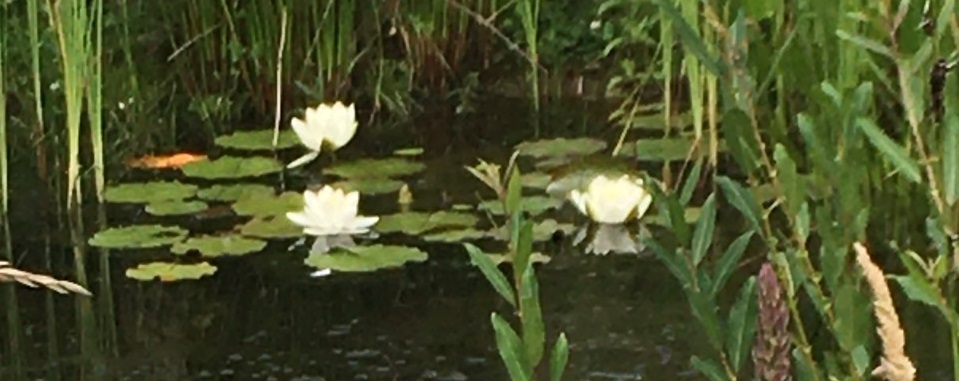
THE COMMUNITY WOODLAND POND
By Phil Stone and Sue Ashton
We thought a pond would be an attractive addition to the woodland as it would create a different habitat to encourage a wider range of wildlife, including insects such as dragonflies, and perhaps amphibians such as newts and frogs. It would be a source of water for birds and mammals already on the site, while other wildlife, such as hedgehogs, might be attracted to the site.
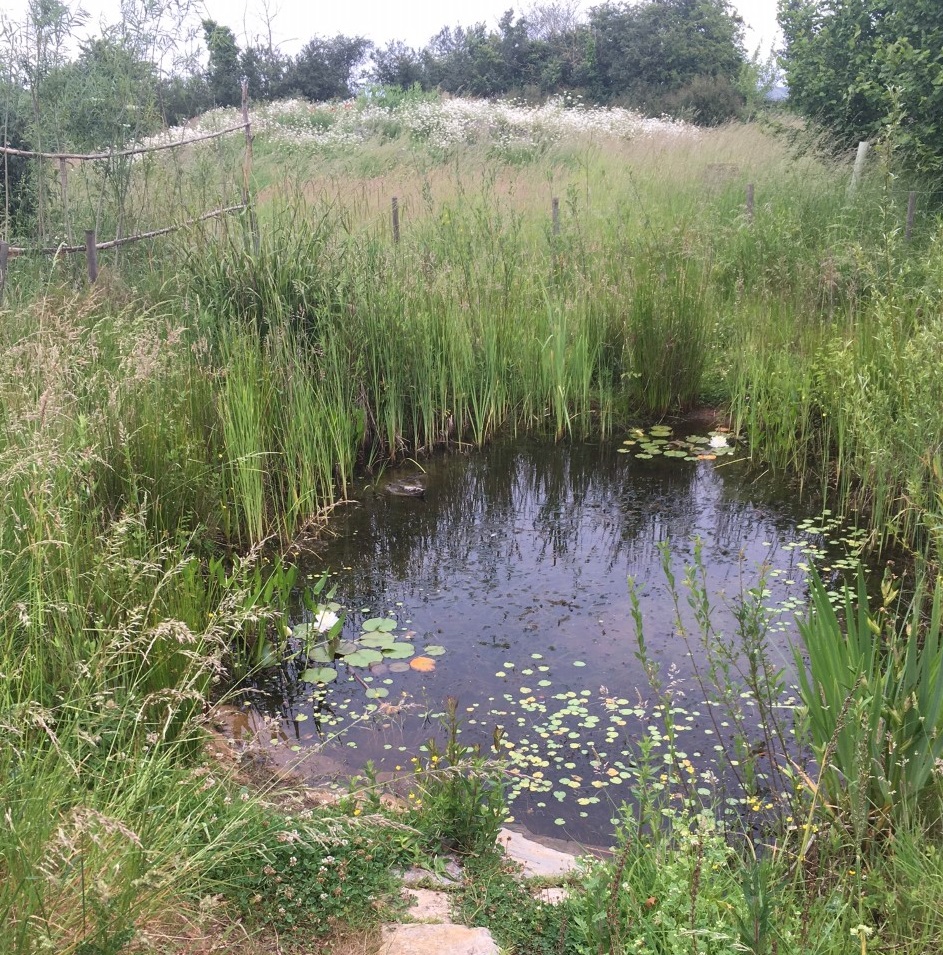 The pond in July 2021 (photo Phil Stone)
The pond in July 2021 (photo Phil Stone)
Building the pond
The pond was planned to be about 600 mm deep in the middle with shallow, sloping edges. It was excavated in early September 2017 and we hoped it would fill without the use of a pond liner, but this experiment didn’t work and in the long, hot summer of 2018 it completely dried up.
We therefore decided in the autumn of 2018 to re-excavate the pond in order to reshape the deeper, central area and line it with carpet and a pond liner. We were able to do this work with the aid of an Awards for All grant from the National Lottery Community Fund.
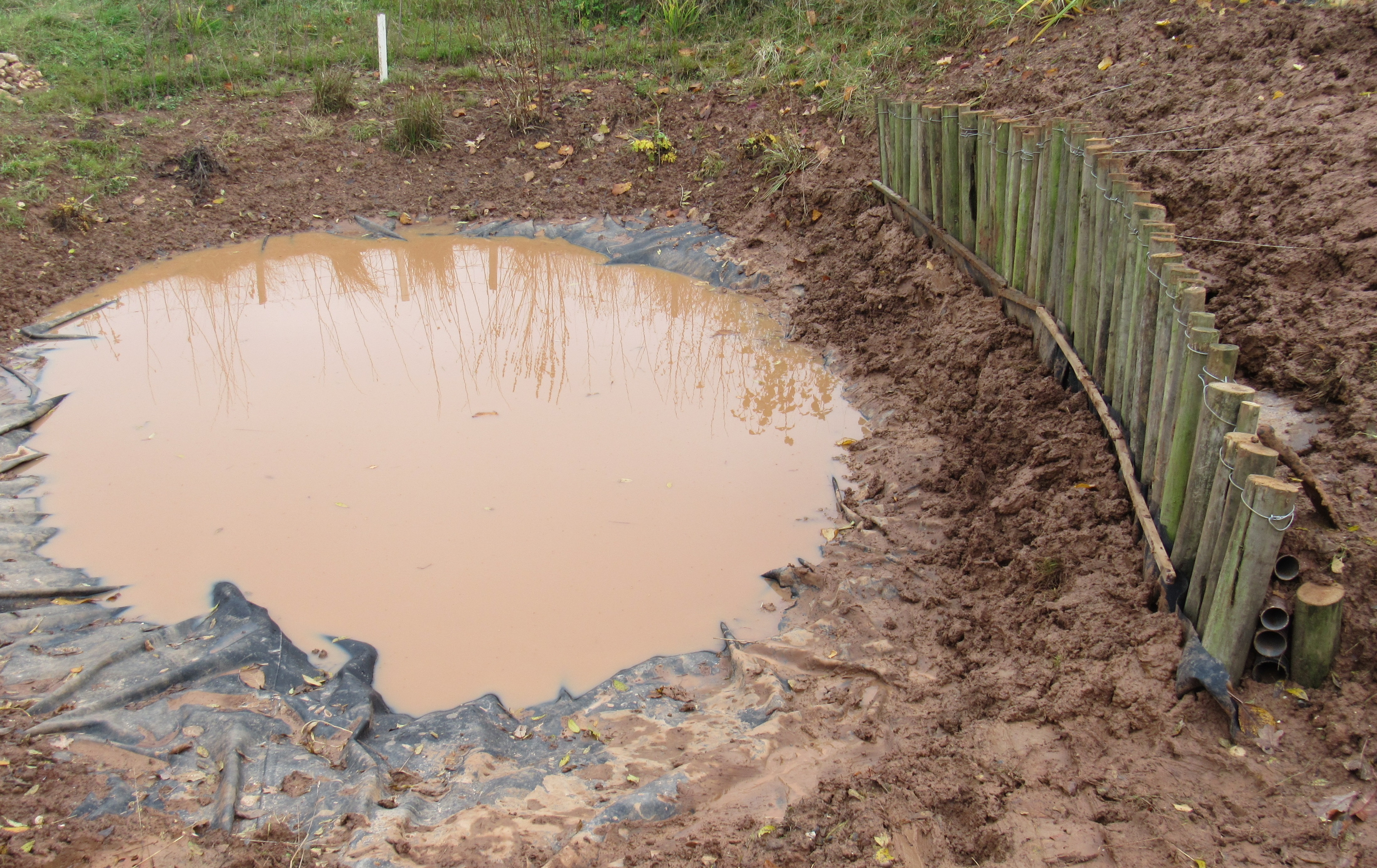 Pond filling up after re-excavation and lining (photo Sue Ashton)
Pond filling up after re-excavation and lining (photo Sue Ashton)
We put in a timber wall on one side with a bank behind it, including pipes and wooden structures to form a safe retreat for frogs and toads.
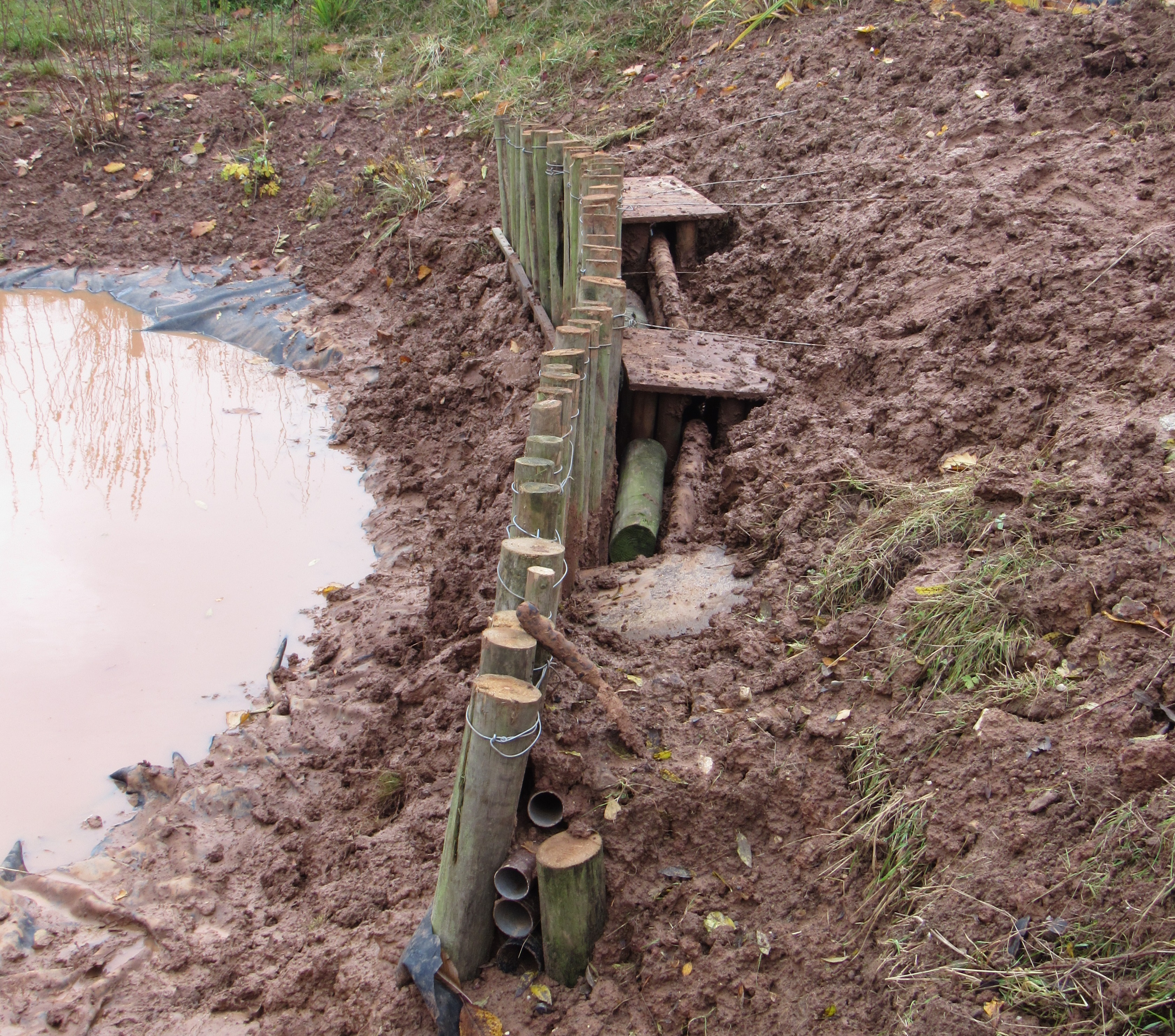 In-built structures to shelter frogs and toads (photo Sue Ashton)
In-built structures to shelter frogs and toads (photo Sue Ashton)
Planting the pond
In the spring of 2019, we added aquatic plants, partly in the hope that they would help the pond to clear, and planted other species around the margin.
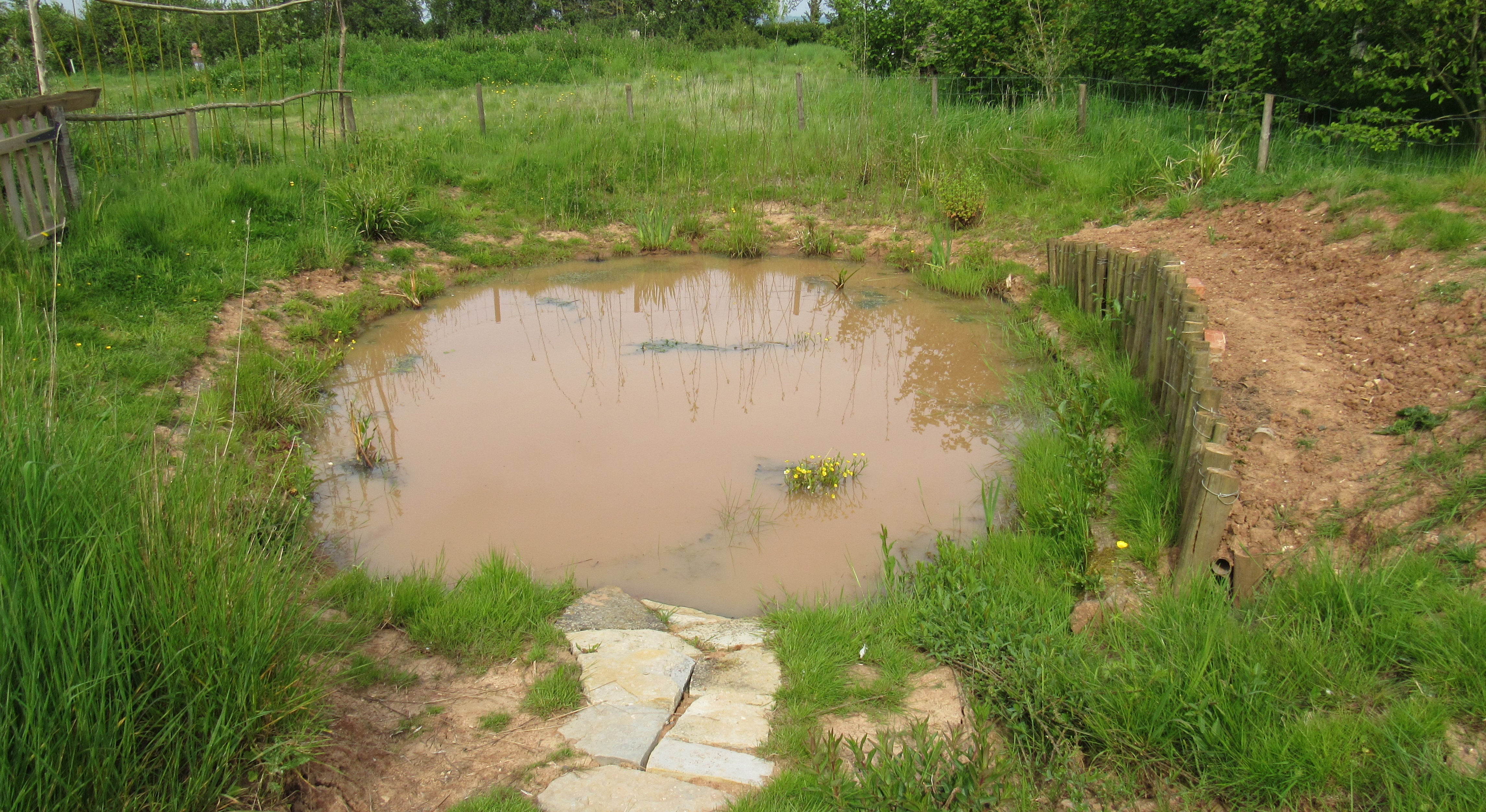 Pond in the spring of 2019 (photo Sue Ashton)
Pond in the spring of 2019 (photo Sue Ashton)
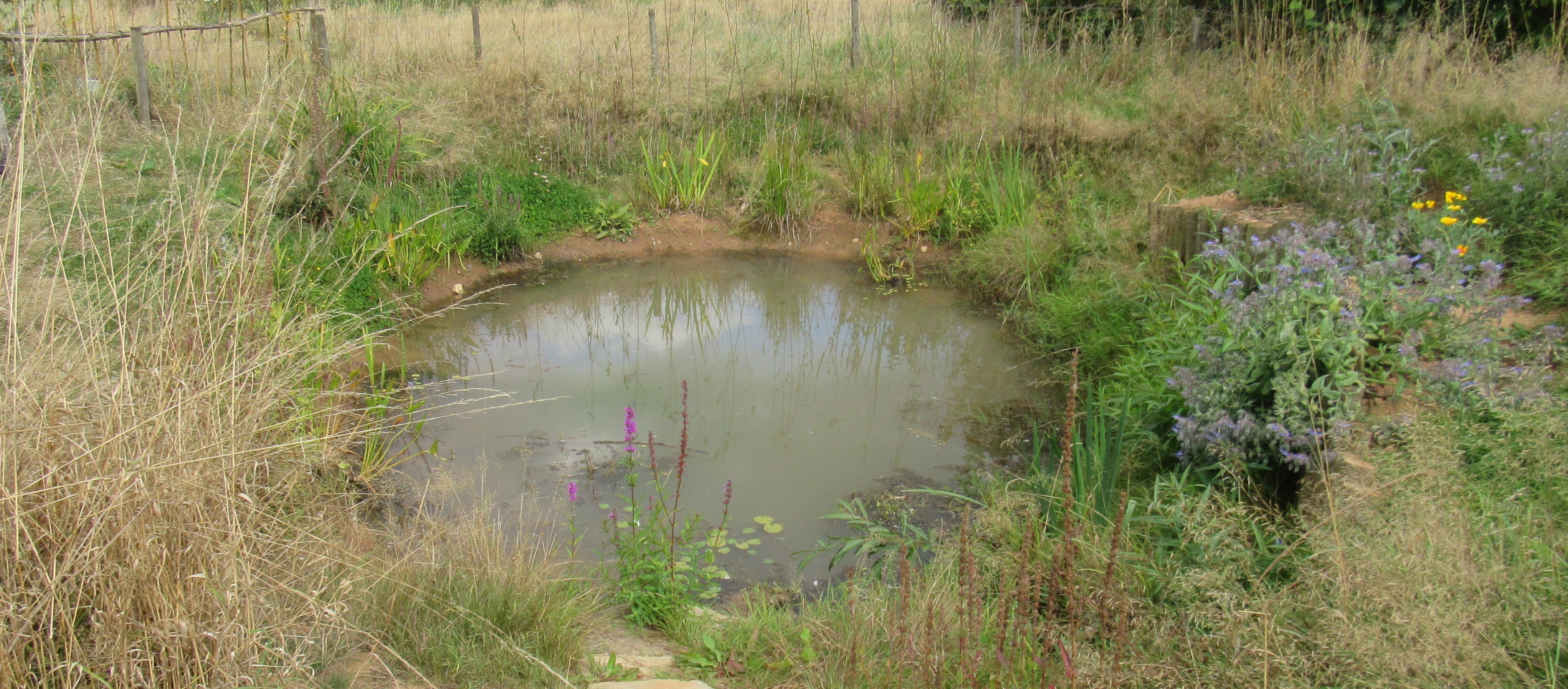 Pond in the autumn of 2019 (photo Sue Ashton)
Pond in the autumn of 2019 (photo Sue Ashton)
These plants have established well and include Yellow flag, Purple loosestrife, rushes, mini bullrushes, Meadowsweet, Pickerel weed and White and Fringed water lilies which flower throughout the summer. For more information about the pond plants, see the Plants page under Species.
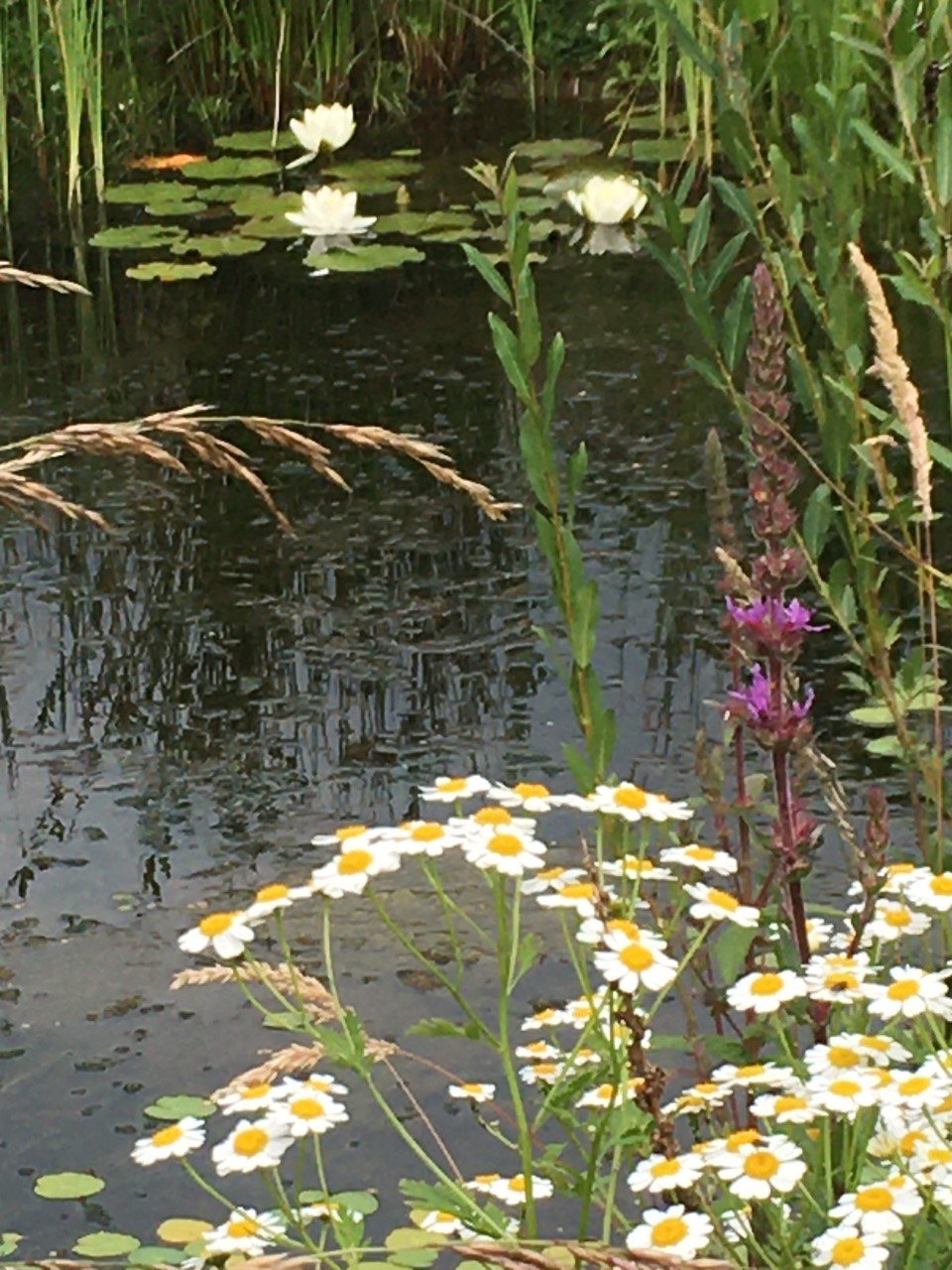 Water lilies on the pond in July 2021 (photo Phil Stone)
Water lilies on the pond in July 2021 (photo Phil Stone)
The algae which appeared has at last begun to be less visible, probably as a result of the accumulated nutrients having been reduced by the plants. The bag of barley straw put into the pond in 2020 may have helped with this.
Life in and around the pond
In May 2019, the pond received its first dragonfly in the form of a male Broad-bodied Chaser, a species which is often the first to colonise new ponds. It could often be seen returning to a favourite perch by the water's edge.
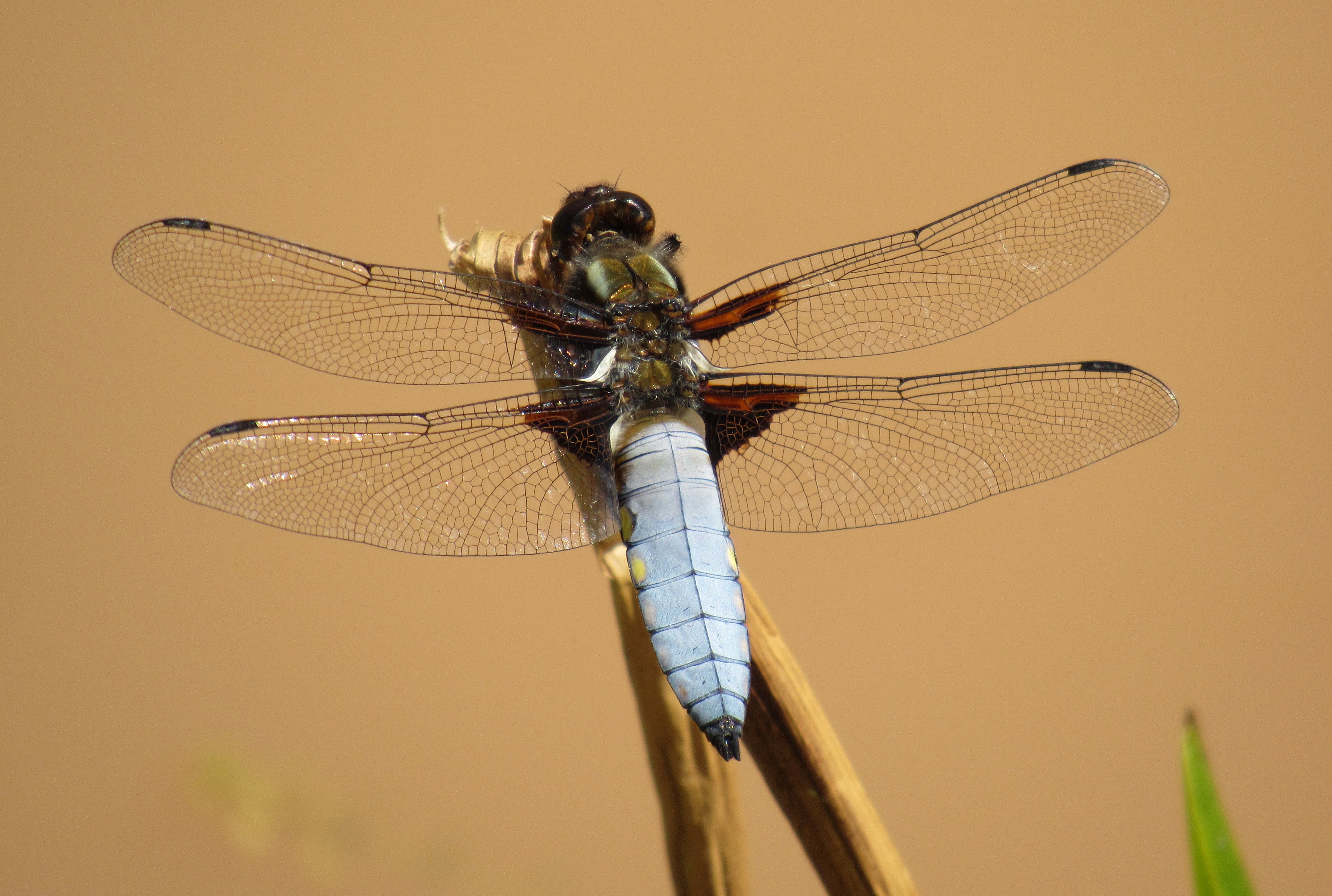 Male Broad-bodied Chaser dragonfly (photo Sue Ashton)
Male Broad-bodied Chaser dragonfly (photo Sue Ashton)
Other dragonflies that can be seen include Scarce Chaser, Emperor Dragonfly, Common Darter, Southern Hawker, Migrant Hawker and Brown Hawker as well as many damselflies (see Dragonflies page under Species). Various dragonfly species have been observed egg laying at the pond and we know that the Emperor Dragonfly has bred successfully as an exuvia or cast skin was found beside the pond.
The pond also has water snails, water beetles and pond skaters. Both pond skaters and water snails use the surface of the water to move across the pond, the pond skater on top of the water's surface and the water snail beneath.
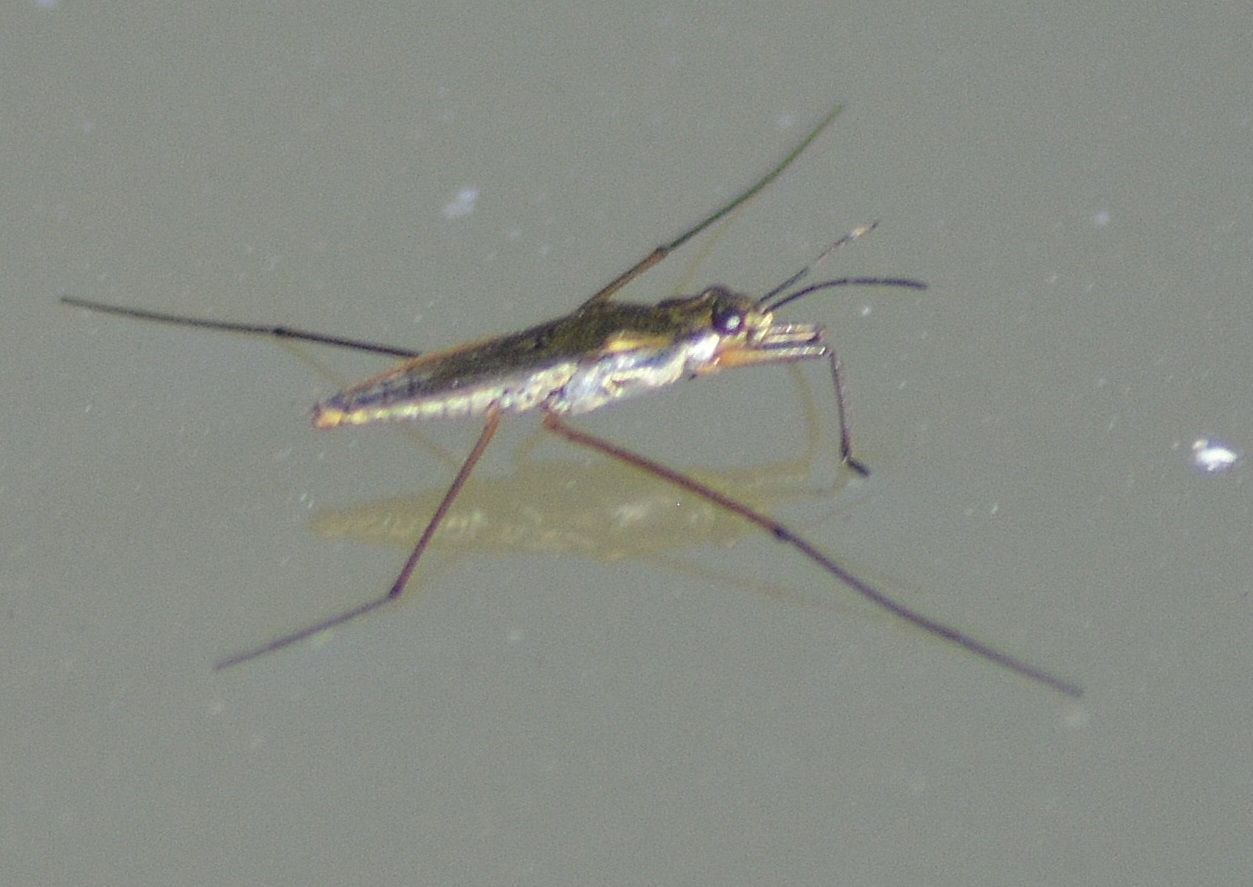
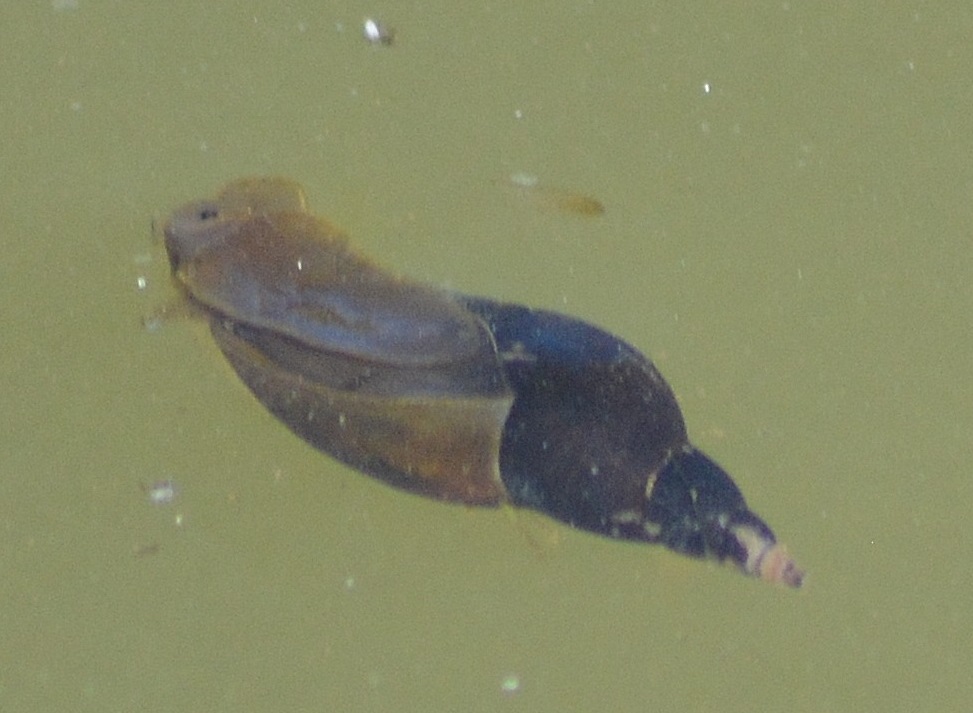 Pond skater (left) and water snail (right) (photos Tony Hoskin)
Pond skater (left) and water snail (right) (photos Tony Hoskin)
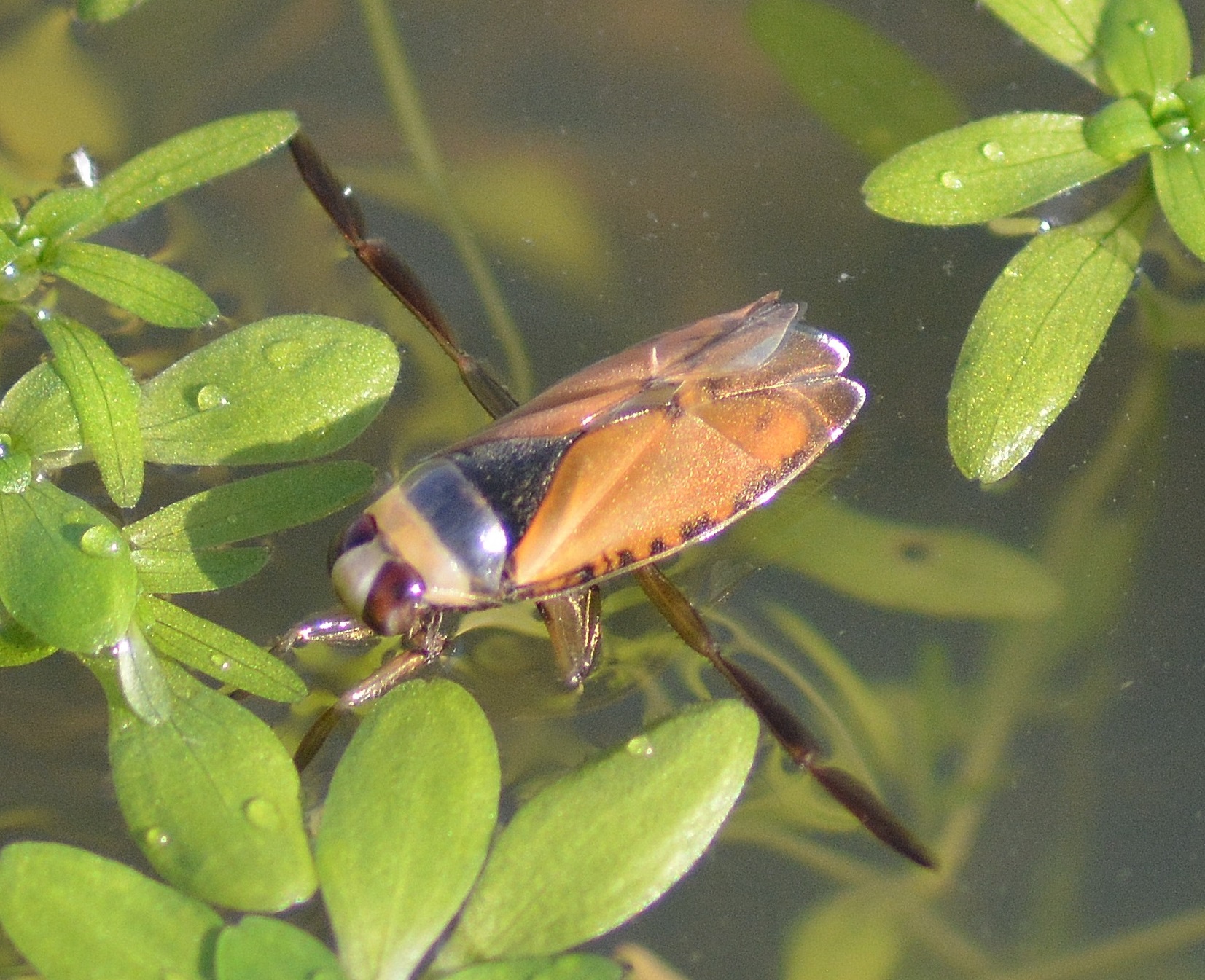
Great Water Boatman (left) and Lesser Diving Beetle (right) (photos Tony Hoskin)
We saw our first Common Frog at the pond in September 2019. We had expected to see more frogs, but it could be that visits from the large heronry at Swell Woods, near Fivehead, are not giving them much chance to multiply. It’s early days in the life of a pond so we shall see. A more unexpected sighting was a Snipe taking off from the pond area in January 2020.
Common Frog close to the pond in September 2019 (photo Tony Hoskin)
The pond has a low fence around it and walkers are welcome to stop and stare, but please avoid getting near to the water.
 Purple loosestrife by the pond (photo Sue Ashton)
Purple loosestrife by the pond (photo Sue Ashton)